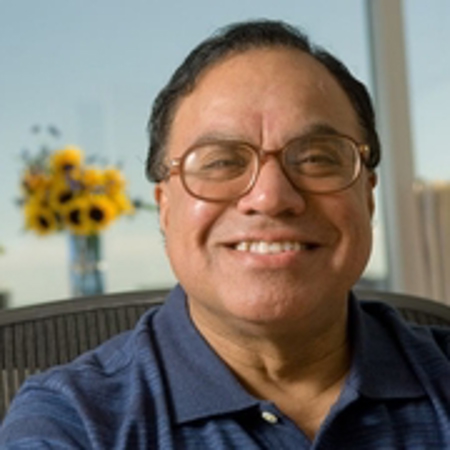C. Adinarayana Reddy
Professor Emeritus, Department of Microbiology, Genetics, & Immunology
Email: reddy@msu.edu
Bio
B.V.Sc., 1962, Sri Venkateswara University M.S., 1967, University of Illinois Ph.D., 1970, University of Illinois Post-doctorate, 1970-1972, University of Georgia Research My laboratory is engaged in a variety of research efforts spanning several subspecialties (basic and applied) within the department. Our research interests, though varied, necessarily overlap and provide a broader perspective on various microbiological processes. Thus, researchers in my laboratory would not only utilize modern research methodology to answer research questions of fundamental microbiological importance but also would be able to use the results of basic research to the solution of important practical problems. The major components of plant biomass include cellulose, hemicellulose and lignin. Cellulose (a linear polymer of glucose) and lignin, respectively, are the first and second most abundant organic compounds in the biosphere. The abundance of hemicellulose on earth is comparable to that of lignin. One of the important long term goals in my laboratory centers on the efficient transformation of biomass into fuels (e.g., ethanol) and chemicals (e.g., acetate, acetone, butanol, acrylate, polyphenols, and various low molecular weight phenolic compounds). A major research emphasis in my laboratory is on the molecular biology of lignin degradation by wood-degrading basidiomycetes, principally Phanerochaete chrysosporium. We employ molecular biological, biochemical, and ecological approaches to understand lignin biodegradation by a group of filamentous fungi belonging to the group, basidiomycetes. There is an intense worldwide interest in this area of research because of its potential application to biopulping, degradation of toxic environmental pollutants such as dioxins, and biotransformations of lignocellulosic materials to feeds, fuels, and chemicals. Our research involves cloning, characterization, sequencing, and regulation of expression of lignin peroxidase (LIP) genes/cDNAs of whiterot fungi, with emphasis on Phanerochaete chrysosporium system. Studies are in progress to elucidate the molecular mechanisms of regulation of secondary metabolism, using P. chrysosporium lignin degradation system as a model. A variety of biochemical mutants are being employed to understand the biochemistry and genetics of fungal lignin degradation. We believe these studies would contribute to the development of practical procedures for the bioprocessing of lignins and lignocellulosic biomass into useful products, for effective biobleaching of paper pulps and for detoxification of recalcitrant environmental toxins such as PCBs, dioxin and DDT. We are now studying the ability of P. chrysosporium for degrading a variety of chloroaromatic environmental pollutants in the laboratory. A field scale study for bioremediation of a PCB contaminated site will also be underway in the very near future.
